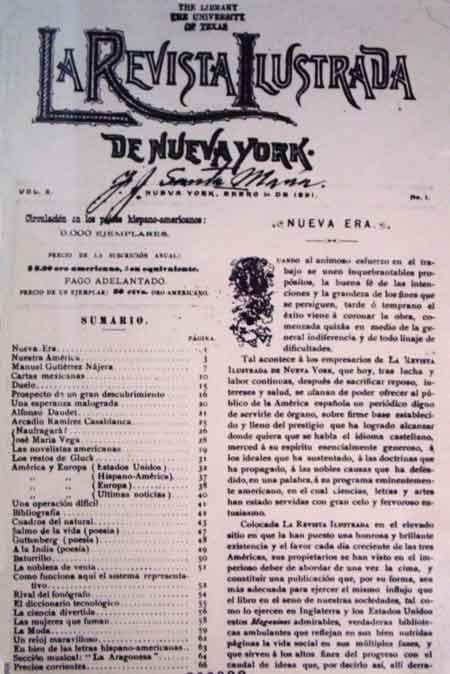In January 1891, a new issue of La Revista Ilustrada de Nueva York appeared, a monthly publication in Spanish edited in that city by the Panamanian Elías de Losada Pisé since December 1886 and which enjoyed well-deserved prestige among the Spanish-American intelligentsia.
In an affectionate letter to Losada dated November 17, 1890, Martí accepted "his commission to write some pages for the January issue." Thus, in a few weeks, and in the midst of his multiple and varied obligations, he wrote and delivered his extensive essay, considered one of his fundamental works for contributing decisively to the understanding and defense of Latin American identity and the sovereignty of our peoples.
"Our America" is a text composed of only eleven paragraphs, but in any of its multiple editions it occupies many pages. We would be surprised that a person with so many duties and daily affairs like Martí could prepare an essay of such length and such a scope of ideas and richness of style in such a short time, if we were not aware of his extraordinary originality of thought and the speed of his exercise of writing, facilitated by dealing with a subject to which he had paid attention for twenty years, which was already reaching maturity, and which, at the same time, was motivated by the already appreciable circumstances of that time at the end of the century on the continent and in the orb.
In fact, there are three parts to the essay, although these never jeopardize its unity or logical argumentative sequence. The first is developed during the first two paragraphs, aimed at marking the importance of the unitary defense of our lands. From the image of the "vain villager", locked in his village affairs and oblivious to the world, Martí maintains that the time demanded immediate action to protect our region. Thus, he demands "trenches of ideas", because it is "the hour of the recount and the united march, and we have to walk in a tight square, like silver in the roots of the Andes."
The second part is the longest and is dedicated to studying in detail how and why independent Latin America lived under permanent instabilities, which weakened its ability to prevent its fall under new hegemonic powers. In the possessing sectors, the old oligarchies of colonial times continued with outstanding significance, which took as models the social, economic and political structures of European countries and the United States, and ignored the interests and the need for justice for the popular sectors: the natural man, with the Indian, the Negro and the peasant. "The government must be born from the country. The spirit of the government must be that of the country. The form of government must conform to the constitution of the country." And he declares: "There is no battle between civilization and barbarism,
The Cuban was precisely asking for the knowledge of our identity and the structuring of our America, not through models from other latitudes, but adapted to their own realities. "Ruler, in a new town, he means creator." And that is why he calls for creating the university itself, for knowing our history, "from the Incas to here." Therein lay the internal problems, the "tiger within."
And the last part refers to the "outside tiger": "The disdain of the formidable neighbor who does not know it is the greatest danger of our America." This alert, undoubtedly anti-imperialist, in the face of growing expansionism in the United States, is the logical and correct conclusion of those who would summon the Cuban people to the necessary war for their independence and thus contribute to preventing this spillover of the rising power of the north by " the romantic nations of the continent and the painful islands of the sea, where the seed of the new America would flourish.


Deje un comentario